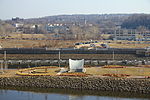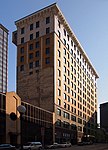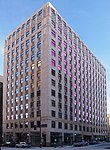Minnesota Boat Club Boathouse on Raspberry Island
Boathouses in the United StatesBoathouses on the National Register of Historic PlacesClubhouses on the National Register of Historic Places in MinnesotaHarv and Sfn no-target errorsMidwestern United States sports venue stubs ... and 15 more
Minnesota Registered Historic Place stubsMinnesota building and structure stubsMinnesota sport stubsMississippi National River and Recreation AreaNational Register of Historic Places in Mississippi National River and Recreation AreaNational Register of Historic Places in Saint Paul, MinnesotaRowing club stubsRowing clubs in the United StatesSaint Paul, Minnesota stubsSpanish Revival architecture in the United StatesSports clubs established in 1870Sports in MinnesotaSports venues completed in 1910Sports venues in MinnesotaTransportation buildings and structures on the National Register of Historic Places in Minnesota

The Minnesota Boat Club Boathouse on Raspberry Island is a historic structure in Saint Paul, Minnesota, United States. It is the home of the Minnesota Boat Club, a rowing club founded in 1870, that is Minnesota's oldest athletic organization. In 1885, a wooden structure was built on Raspberry Island to house the Minnesota Boat Club. The club constructed a new boathouse in 1910, which was designed by George H. Carsley in the style of Mission Revival architecture. The boathouse building was listed on the National Register of Historic Places in 1982.
Excerpt from the Wikipedia article Minnesota Boat Club Boathouse on Raspberry Island (License: CC BY-SA 3.0, Authors, Images).Minnesota Boat Club Boathouse on Raspberry Island
Sam Morgan Regional Trail, Saint Paul Downtown
Geographical coordinates (GPS) Address Nearby Places Show on map
Geographical coordinates (GPS)
| Latitude | Longitude |
|---|---|
| N 44.941944444444 ° | E -93.091388888889 ° |
Address
Wabasha Bridge
Sam Morgan Regional Trail
55146 Saint Paul, Downtown
Minnesota, United States
Open on Google Maps









